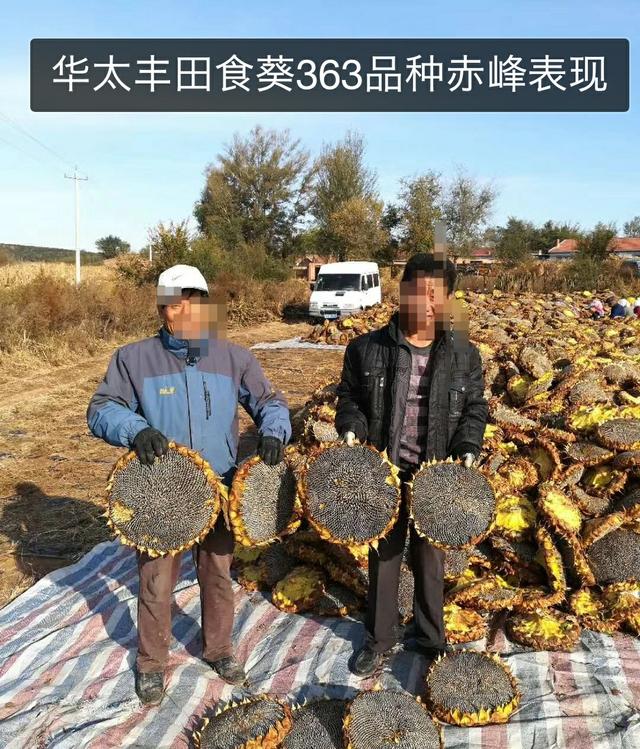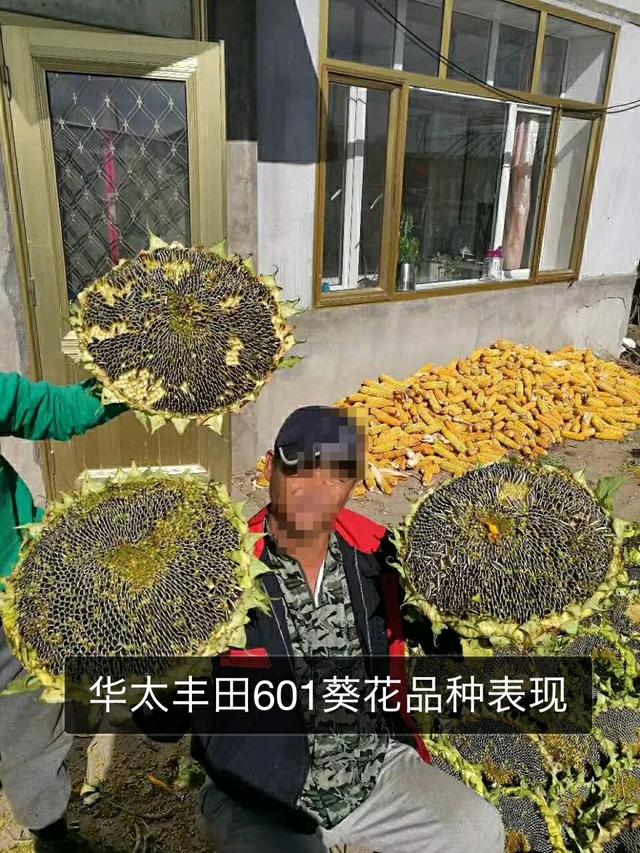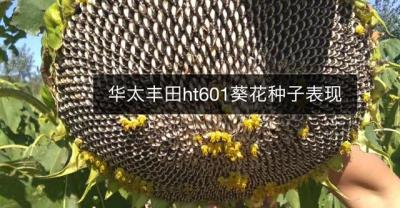High-yielding planting techniques of "5" Sunflower-100 questions about Sunflower planting techniques
23 Why do hybrids have the ability to resist drought and lodging?
Sunflower hybrids have strong drought resistance and lodging resistance. According to the test, after nearly 40 days of drought before and after flowering, the soil water content of 20 cm, 20 cm and 40 cm was 8.8%, 15.12% and 19.6% respectively, and the sunflower was still growing normally. One of the reasons is that the root system is developed and deep into the soil, which can absorb and utilize the water in the deep soil; second, the stem is full of sponge-like pulp, which can store more water; third, there are dense bristles on the stem and wax layer on the leaf surface, which can reduce the transpiration of water.

Which environmental conditions affect the increase of oil content of oil sunflower seeds?
The main results are as follows: (1) Water is the dominant factor formed by oil, and the oil content mainly depends on the supply and utilization of water. Water deficiency not only leads to the decrease of oil content, but also changes the composition of oil, which affects the nutritional value of edible oil. The filling period is the key period for the formation of oil, when sufficient water can promote the plastic material to be transformed into oil, which is not conducive to the conversion into protein, thus increasing the oil content.
(2) during the oil-forming period, the temperature difference between day and night should be kept stable and should not be too high or too low when the temperature is 21: 24 ℃. In a suitable range, a slightly larger temperature difference between day and night is beneficial to the oil formation process. High temperature during the day can increase photosynthetic intensity and photosynthetic products, while lower temperature at night can reduce respiratory consumption and increase oil content. If the temperature difference between day and night is too large, more than 50%, that is, the difference between the highest and lowest is more than half, it is very disadvantageous to the formation of oil. The temperature difference is too small, which means that the temperature at night is high, the respiration is strong, the nutrient consumption is more, and the oil accumulation is less, thus reducing the oil content.
(3) in the case of the same geographical latitude, the oil content in the area with high altitude is high; at the same altitude, the oil content in the area with high latitude is high, and the influence of altitude is greater than that of latitude.
(4) the oil content of oil sunflower sown in summer is higher than that in spring, and the oil content is different in different sowing time and oil-forming period.
(5) the type and quantity of fertilizer have direct influence on the formation of oil content. Nitrogen is the main component of synthetic protein, too much nitrogen fertilizer, especially in the later stage, when the nitrogen fertilizer is sufficient, most of the plastic materials are converted into protein, and the seed oil content is relatively reduced; phosphorus is an intermediate product from sugars to oil. The application of phosphorus fertilizer can increase the oil content of seeds, especially the lack of phosphorus during flowering and pollination has a greater effect on the formation of oil.
There is a certain relationship between planting density and oil content, and proper close planting can increase oil content. This is because the dense planting leaves are large, nitrogen fertilizer is consumed in the stems and leaves, and the amount of nitrogen fertilizer entering into the seeds is relatively reduced, which is beneficial to the increase of oil content.
To sum up, the corresponding technical measures should be actively taken in production to do everything possible to improve the oil content.

25 what conditions affect the improvement of seed setting rate of sunflower hybrids?
(1) drought. It is well known that sunflower is a drought-resistant and saline-alkali tolerant crop, but this does not mean that sunflower does not need water or only needs less water for its growth and development. On the contrary, sunflower is a crop that needs more water. It is determined that for every 1 kg of dry matter produced by sunflower, 469-569 kg of water is needed. Sunflowers have the strongest drought resistance from emergence to budding, but during the period from budding to the end of flowering, sunflowers need the largest amount of water, accounting for about 60% of the water needed during the whole growth period. If there is a lack of water in this period, it will cause poor pollination or abortion after pollination, resulting in an increase in empty chaff grains and a decrease in yield.
(2) neglect of management. In some areas, sunflowers are mostly planted with idle crops or side-house crops, and farmers only plant and harvest, but there are no other basic agricultural operations, such as watering, fertilization, pest control and so on. As a result, sunflowers are short of water and fertilizer during the growth period, especially during the critical growth period, growth and development is hindered, empty chaff grains increase, and yield decreases.
(3) lack of media. The position of the pistil and stamen of the sunflower floret is different, the stamen matures first, the pistil matures after the pistil, has the incompatibility, the self-flowering is unfruitful. Sunflower is a cross-pollinated crop, which is mainly pollinated by insects. If there is a lack of media, pollination will be affected, resulting in an increase in the number of empty grains. In recent years, due to the extensive use of chemical pesticides, the number of media insects has decreased, which is also one of the reasons for the low pollination rate of sunflower and the increase of empty grain.
(4) breed factor. According to foreign research, the seed setting rate of sunflower is negatively correlated with stem thickness and disk diameter, that is, the thicker the stem, the larger the disk, the more empty grains. In some areas, the planting density of sunflower is too low and the stem is thick, which is also the reason for the increase of empty chaff grains.
(5) climatic factors. In the process of flowering and pollination, if there is a low temperature, overcast and rainy day, the florescence is often late, the number of florets is reduced, and the maturation time of pistils and stamens is postponed. In the case of high temperature, drought and dry weather, the florescence was earlier, the amount of pollen decreased, the vitality became weaker, the fertilization process could not be carried out normally, and some florets could not be pollinated. On cloudy and rainy days, the pollen is wet or clumps, and the bees stop moving, resulting in a decrease in yield and quality. 26 what are the elements that make up the yield of sunflowers?
The factors that constitute the yield of sunflower are the number of plants per mu, the number of grains per plate and 1000-grain weight, so production requires reasonable close planting, adjust the best ratio of grain number per plate and 1000-grain weight, increase the seed setting rate and improve the yield of sunflower. 27 Why should sunflowers be watered three times during budding, flowering and filling?
According to the experiment, the water requirement from seedling emergence to budding of sunflower accounts for 21.94% of the total growth period, with an average daily quantity of 0.51%; the water requirement from budding to flowering accounts for 45.41% of the total water demand, with an average daily amount of 1.82%; and the water requirement from flowering to maturity accounts for 32.65% of the total water demand, with an average daily quantity of 0.84%. It can be seen that the peak period of water demand is from budding to flowering (consistent with the peak of fertilizer demand). So how many times should I irrigate it? According to the experiment of Youyi Township Agricultural Science Station in Jinzhou, Liaoning Province, the yield of sunflower was 105.5 kg per mu at budding stage, 130kg per mu for budding and flowering, 159kg per mu for budding, flowering and grouting, and 70kg per mu without watering. The yield of irrigation Sanshui is 127% higher than that of no irrigation, 22.3% higher than that of two water irrigation, and 50.7% higher than that of irrigation one water. Therefore, good irrigation of budding, flowering and grain filling is the key to ensure high yield. Why do the seeds on the same disk become smaller from the outside to the inside?
This phenomenon is entirely due to the relationship between the distribution characteristics of vascular bundles in the disk and the transport of water and nutrients. There is a competitive gradient on the same disk, and it is easier for the grains around the disk to obtain water and nutrients transported from leaves. The vascular bundle system that provides nutrition to the disk starts from the stem to the periphery of the disk, distributes densely, and then extends to the whole disk. The center of the disc is often filled with marrow parenchyma cells lacking vascular bundles, so the florets around the disc receive nutrients directly from a large number of vascular bundle systems, while the central florets take nutrients from the secondary vascular bundles or absorb nutrients from the diffusion effect of pulp cells. So the seeds in the middle are not as well developed as those around them.

Why is there a phenomenon of flowers but not fruit in the middle of the disk?
Biological experiments have proved that the disk becomes the transport bank of nutrients when it is formed, and the nutrients are first transported to the periphery of the disk through vascular bundles, so that the seeds on the periphery can absorb nutrients earlier and more. Because there are fewer vascular bundles nearby, the seeds in the center of the disk have less opportunities to obtain nutrients, especially when planting is too dense and the atmosphere is dry. When the supply of water and fertility is insufficient, the inner circle seeds get too little water and nutrients to pollinate and bear fruit normally. It can be seen that there must be reasonable close planting to ensure that each plant occupies a reasonable nutritional area, and timely irrigation in the flowering period will not cause drought. What nutrients do sunflowers need for growth?
Sunflower needs a lot of nutrient elements in its life, such as carbon, hydrogen, oxygen, nitrogen, phosphorus and potassium; medium nutrients such as calcium, magnesium and sulfur; and micronutrient elements such as iron, boron, manganese, copper, zinc, molybdenum and chlorine. But the most needed are nitrogen, phosphorus and potassium.
To produce 100kg sunflower seeds, edible sunflowers need 6.22kg of nitrogen, 1.33kg of P2O5, 14.6kg of K2O and 1.44kg of nitrogen, 1.86kg of P2O5, 16.6kg of K2O and 0.3v2.3 of N:P2O5:K2O, respectively.
Gansu Huatai Toyota Agricultural Technology Co., Ltd. mainly deals in excellent vegetable seeds: sunflower, oil sunflower, zucchini; TY-resistant red fruit tomato, powder fruit tomato, small tomato; protected field sweet pepper; all kinds of fine watermelon; watermelon grafted rootstock, cucumber rootstock; heat-resistant and cold-resistant spinach, coriander, heading lettuce and so on.
- Prev

24 kinds of drought-tolerant plants that are best planted, which are essential for people who are short of water or for lazy people.
We know that all plants need water to survive, but some plants need more water, while others need less water. Today's courtyard show.
- Next

Accurate "immediate" dental implant to innovate the new experience of implant
Var vote_init_script = document.getElementById ("vote_init_node"); if (vote_init_script) {document.getEl...
Related
- Fuxing push coffee new agricultural production and marketing class: lack of small-scale processing plants
- Jujube rice field leisure farm deep ploughing Yilan for five years to create a space for organic food and play
- Nongyu Farm-A trial of organic papaya for brave women with advanced technology
- Four points for attention in the prevention and control of diseases and insect pests of edible fungi
- How to add nutrient solution to Edible Fungi
- Is there any good way to control edible fungus mites?
- Open Inoculation Technology of Edible Fungi
- Is there any clever way to use fertilizer for edible fungus in winter?
- What agents are used to kill the pathogens of edible fungi in the mushroom shed?
- Rapid drying of Edible Fungi

